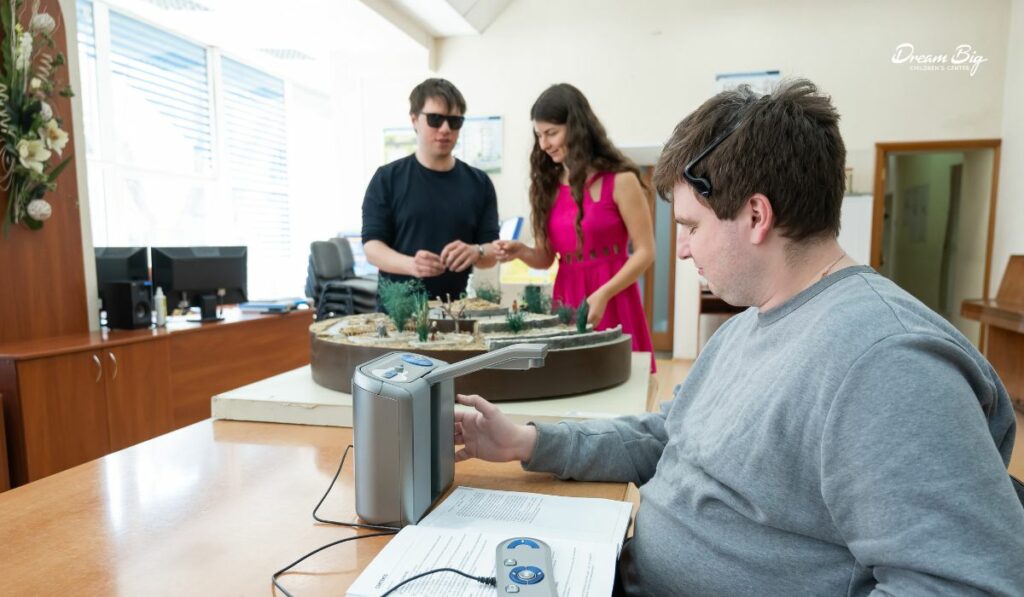Navigating Insurance for Autism Services
Learn how to effectively navigate insurance for autism-related services.
For many kids on the autism spectrum, making direct eye contact can be overwhelming or uncomfortable. Focusing on someone’s eyes demands intense attention and can be distracting or distressing. This discomfort often stems from difficulties processing social cues and maintaining focus on multiple stimuli simultaneously, such as facial expressions and verbal communication.
Applied Behavior Analysis (ABA) stands as an influential therapeutic approach in supporting children with autism. It employs a structured method to break down complex social behaviors, like eye contact, into smaller, more manageable steps. ABA then uses positive reinforcement techniques to encourage and teach these behaviors effectively.
Specifically targeting eye contact, starts with incremental increases in the duration of eye contact, gradually pairing it with positive experiences and utilizing rewards or praise to reinforce the behavior. This approach helps the child with the discomfort of eye contact while associating it with positive outcomes, which can be particularly effective in supporting children with autism in Apple Valley, CA.
Eye contact holds significant social value, yet for children with autism, it often proves challenging and causes difficulties in social communication. This discomfort or lack of engagement with eye contact doesn’t imply disinterest but reflects their unique processing of social cues. Therapeutic methods like Applied Behavior Analysis (ABA) aim to gradually help these children become more comfortable with eye contact by breaking down the skill into manageable steps and employing positive reinforcement techniques.

Eye contact presents a unique challenge for individuals with autism. Many find it uncomfortable or overwhelming to engage in social communication. This difficulty in making or maintaining eye contact doesn’t signify disinterest in social interaction; instead, it reflects their unique way of processing social cues. Therapeutic approaches, such as Applied Behavior Analysis (ABA), aim to support individuals with autism in gradually becoming more comfortable with eye contact by breaking it down into smaller, manageable steps and using positive reinforcement techniques.
Eye contact holds significance in social interaction for various reasons, even within autism. For individuals on the autism spectrum, eye contact plays a crucial role in communication and social connection. It’s an essential area addressed by ABA behavioral therapists. It helps convey emotions, intentions, and social cues, allowing people to understand each other’s thoughts and feelings. Despite this challenge, improving eye contact skills can support better social engagement and communication for individuals with autism, aiding in their interactions and relationships with others.
Eye contact can become stressful in various situations, particularly for individuals with autism. For many people, including those on the autism spectrum, making eye contact can lead to feelings of discomfort, anxiety, or overwhelm. This stress might arise due to receptive issues where focusing on someone’s eyes feels intense or distracting, making it difficult to process other social cues simultaneously. Additionally, challenges in interpreting social cues or understanding the significance of eye contact in social interactions can contribute to this stress. When eye contact becomes stressful, it can hinder social interaction and communication for individuals in specific contexts or environments.
Encouraging eye contact in individuals with autism requires a thoughtful and conscious approach. Recognizing that making eye contact might be challenging or uncomfortable for some, creating a supportive environment is crucial. Strategies can involve gradually introducing eye contact in small, manageable steps, respecting individual boundaries, and using positive reinforcement techniques. Providing a safe and understanding space allows individuals to build comfort and confidence with eye contact at their own pace, fostering better social engagement and communication skills.
Reinforcing instances when a child naturally engages in eye contact is a fundamental strategy. By acknowledging and positively strengthening these occurrences, caregivers and educators can encourage and promote the repetition of this behavior. This method helps make the child more aware of their successful attempts at eye contact and reinforces its importance in communication.
Engaging in discussions centered around subjects that interest the child creates an environment where they’re more inclined to communicate. These conversations serve as a platform for natural interaction, increasing the frequency of eye contact as the child becomes more engaged and involved in the dialogue.
Leading by example proves influential in teaching children with ASD essential social behaviors. Caregivers and educators can demonstrate appropriate eye contact during interactions, acting as a visual reference for the child. This modeling approach assists the child in observing and understanding the proper use of eye contact in social interactions.
Breaking down the skill of making eye contact into smaller, more achievable steps is an effective strategy. Gradually building upon successful attempts at eye contact and rewarding each step helps reinforce the behavior. This method allows children to progress at their own pace, promoting a sense of accomplishment and confidence.
Creating a supportive and comfortable environment is crucial in fostering the child’s comfort by making eye contact. Introducing eye contact during familiar and preferred activities can ease any discomfort or apprehension the child may feel, facilitating a more positive learning experience.
Incorporating intentional pauses during interactions allows the child to initiate or reciprocate eye contact. These breaks in conversation prompt the child to engage visually, offering a supportive space to practice and improve their eye contact skills.

Visual aids, such as pictures or social stories, are valuable tools in guiding children with ASD. These supports help elucidate the expectations surrounding eye contact, offering visual cues that reinforce the skill and aid in comprehension.
Employing these seven tips requires patience, consistency, and a personalized approach that caters to the unique needs and preferences of each child with ASD. By implementing these strategies in a supportive and understanding manner, caregivers and educators can assist children in developing and refining their eye contact skills, fostering improved social interactions and communication abilities.
In navigating the social landscape, eye contact plays a pivotal role, yet for many children with autism, it can be a daunting challenge. Applied Behavior Analysis (ABA) uses a structured approach to help these children gradually acclimate to eye contact, breaking it down into manageable steps and employing positive reinforcement. Understanding the nuances of eye contact challenges and using ABA techniques is crucial in supporting these children to enhance their social interaction skills. If you’d like more personalized guidance in helping children with autism, reach out to Dream Big Children’s Center for expert advice and assistance.
Founded in 2016 by Cristina Cordeiro, Dream Big is a haven where kids of all abilities play and thrive. Blending play-centric spaces with top-notch ABA services for children with Autism across five Southern California centers, Dream Big offers an inviting environment that feels like a dream home playroom. With over 150 dedicated ‘Dreamers,’ our journey is just beginning, and we’re excited to see how your child becomes part of our story!
Making direct eye contact can overwhelm kids with autism. ABA breaks down eye contact into manageable steps and uses positive reinforcement to help children become comfortable with it.
Eye contact aids in conveying emotions, intentions, and social cues, facilitating better communication and social connections. Despite its significance, many individuals with autism find it challenging due to receptive issues or difficulties in interpreting social cues.
Eye contact can induce stress, discomfort, or anxiety, especially for individuals with autism. It becomes overwhelming when focusing on someone’s eyes feels intense or distracting, hindering social interaction.
Encouraging eye contact requires a supportive approach, gradually introducing it, respecting boundaries, and using positive reinforcement. Creating a safe environment helps individuals build confidence at their own pace.
Reinforce natural instances of eye contact, engage in conversations about their interests, model eye contact, break the skill into achievable steps, create a comfortable learning environment, pause to encourage eye contact during interactions, and utilize visual supports.
By employing strategies like positive reinforcement, modeling, shaping behavior, creating a comfortable learning atmosphere, intentional pauses, and visual aids, caregivers and educators can support children with ASD in developing better eye contact skills, ultimately enhancing their social interactions and communication abilities.
No, a lack of eye contact doesn’t signify disinterest. It often reflects challenges in processing social cues rather than a lack of desire for social interaction.
The time frame varies for each child. ABA therapy individualizes the approach, so the duration for a child to become comfortable with eye contact differs based on their progress and comfort levels.
Yes, some individuals with autism may prefer alternative communication methods like using visual aids, augmentative and alternative communication (AAC) devices, or social stories to express themselves comfortably.
Yes, excessive pressure can exacerbate discomfort and anxiety. It’s crucial to employ supportive and gradual approaches to encourage eye contact without overwhelming the individual.
We are committed to empowering families with the information and support they need.
Learn how to effectively navigate insurance for autism-related services.
Explore our FAQs for clear, simple answers about our services, insurance.
Learn how to effectively navigate insurance for autism-related services.